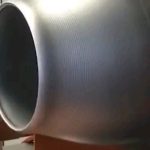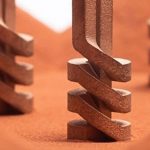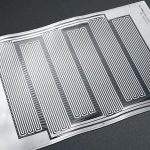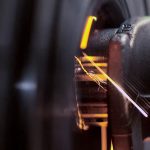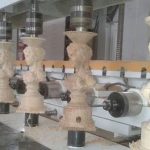cnc machining is the most widely used subtractive manufacturing technology. In CNC, material is removed from a solid block using a variety of cutting tools to produce a part based on a CAD model. Both metals and plastics can be CNC machined.
CNC machining produces parts with tight tolerances and excellent material properties, both for the manufacture of unique parts and prototypes as well as for the production of short and medium series.
How does CNC machine work?
There are two main types of CNC machining systems: milling and turning. Depending on the geometry of the part to be manufactured or the process to be carried out, one system or the other or both will be chosen. Jant SA has machinery capable of carrying out both processes in an integral way.
cnc milling machine
CNC milling is the most popular CNC machine architecture. In fact, the term CNC milling is often synonymous with the term CNC machining.
CNC machining is the most widely used subtractive manufacturing technology. In CNC, material is removed from a solid block using a variety of cutting tools to produce a part based on a CAD model. Both metals and plastics can be CNC machined.
CNC machining produces parts with tight tolerances and excellent material properties, both for the manufacture of unique parts and prototypes as well as for the production of short and medium series.
How does CNC machining work?
There are two main types of CNC machining systems: milling and turning. Depending on the geometry of the part to be manufactured or the process to be carried out, one system or the other or both will be chosen. Jant SA has machinery capable of carrying out both processes in an integral way.
CNC milling
CNC milling is the most popular CNC machine architecture. In fact, the term CNC milling is often synonymous with the term CNC machining.
In CNC milling, the part is mounted on a moving bed and material is removed with rotating cutting tools.
The CAD model is converted into a series of commands that the CNC machine can interpret.
A block of material is then cut to size and placed on the bed, on clamps or fixtures. Precise positioning and alignment are key to making accurate parts, and special metrology tools are often used for this purpose.
The material is then removed from the block using specialized cutting tools that rotate at very high speeds. Multiple steps are often required to create the designed part. First, rough geometry is given to the block, removing material quickly with less precision. Then one or more finishing passes are used to produce the final part.
If the model has features that the cutting tool cannot reach in a single setup (for example, if it has a slot on the back), then the part must be reversed and the above steps repeated.
Next, if tolerances were specified on the technical drawing, the critical dimensions are inspected.
Most CNC milling systems have 3 linear degrees of freedom: the X, Y and Z axes. More advanced systems with 5 degrees of freedom also allow rotation of the bed or head (A and B axes). 5-axis CNC systems are capable of producing parts with high geometric complexity and can eliminate the need for multiple machine setups.
How does cnc turning work?
In CNC turning, the part is mounted on a turntable and the material is removed with stationary cutting tools. In this way, parts with symmetry along their central axis can be manufactured. Turned parts are generally produced faster (and at a lower cost) than milled parts.
The code is first generated from the CAD model and a round, square or hexagonal block of material is loaded into the CNC machine.
The part begins to rotate at high speed and a stationary cutting tool traces its profile, progressively removing material until the designed geometry is created. Holes can also be made along the center axis, using center drills and internal cutting tools.
If the part needs to be flipped or moved, then the process repeats. Otherwise, the is ready for use or further post processing.
CNC turning systems (also known as lathes) are typically used to create parts with concentric profiles. Non-concentric parts can be manufactured using modern multi-axis CNC turning centers, which are also equipped with CNC milling tools. These systems combine the high productivity of CNC turning with the capabilities of CNC milling and can fabricate a wide range of rotationally symmetric (looser) geometries, such as camshafts and radial compressor impellers.
At Pintejin we are experts in CNC machining. We have the most advanced technology. Contact us at [email protected] for the manufacture of your machined parts.

